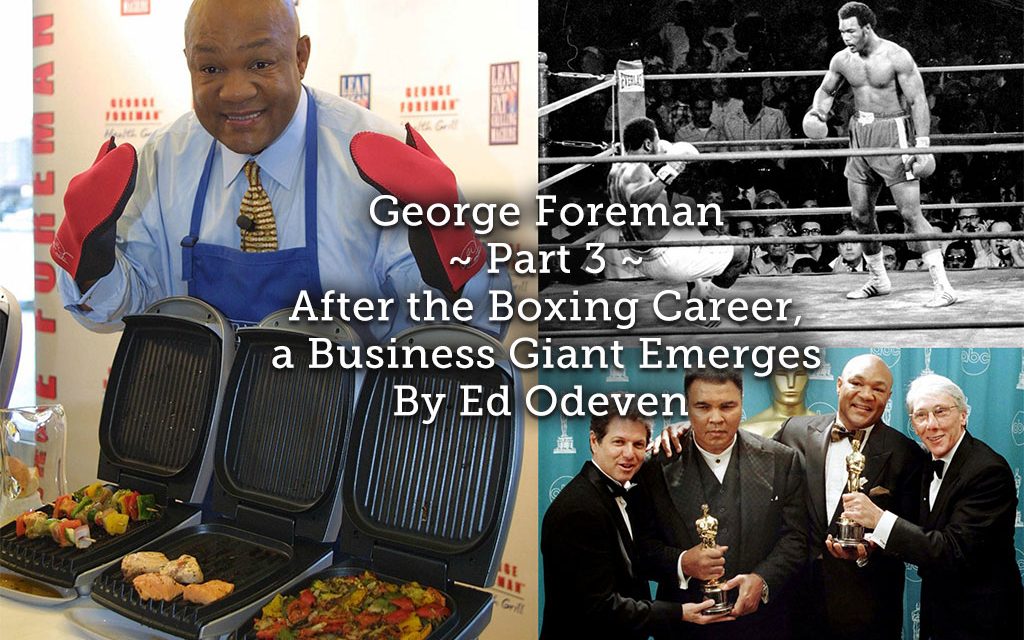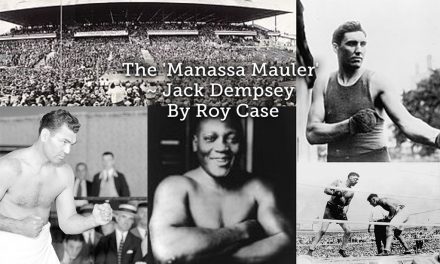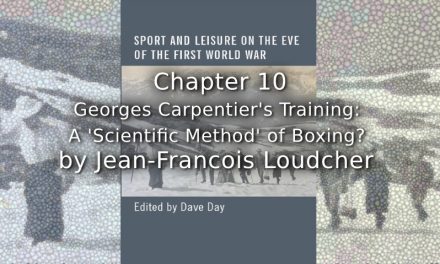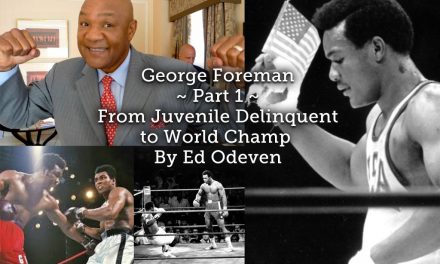Missed Parts 1 and 2? – Then clink on these links
Part 1–bit.ly/2ss6lg6
Part 2 –bit.ly/2ZCEFBj
In his book “Only in America: The Life and Crimes of Don King,” the late author Jack Newfield noted that Sonny Liston had made a big impression on George Foreman.
This influenced Foreman’s demeanor as a fighter, including his facial expressions, which bore a striking resemblance to Liston’s during his pugilistic pursuits.
“Foreman had grown up trying to emulate the scowling menace of Sonny Liston,” Newfield wrote, “and he was deep into that intimidating persona leading up to the (Joe) Frazier fight.” In that January 1973 bout, Foreman dropped Frazier to the canvas six times, nabbing the WBA and WBC titles with a second-round knockout in Kingston, Jamaica. And they met again in June 1976, with Foreman earning a fifth-round TKO.
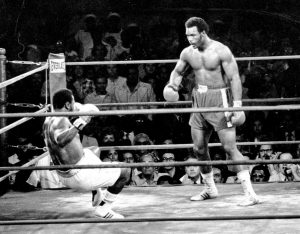
As contemporary news accounts reported, Foreman maintained the visible appearance of the Meanest Man on the Planet in those days.
That was then, this is now.
After his first retirement in 1977, the Houston native made a successful comeback a decade later en route to becoming the oldest heavyweight champion in history at age 45 in 1994. Upon his return, Foreman exhibited a more gregarious personality than former sparring partner Liston from whom he traded punches with in the run-up to the 1968 Mexico City Olympics, where he captured the heavyweight gold medal.
Like basketball Hall of Famer Magic Johnson, Foreman is often seen with an infectious smile during public appearances. His cheerful disposition also helped him transform into a successful businessman who became a sought-after pitchman for numerous projects. One of those products, the George Foreman Lean Mean Fat-Reducing Grilling Machine has sold more than 120 million units worldwide since its launch in the mid-1990s.
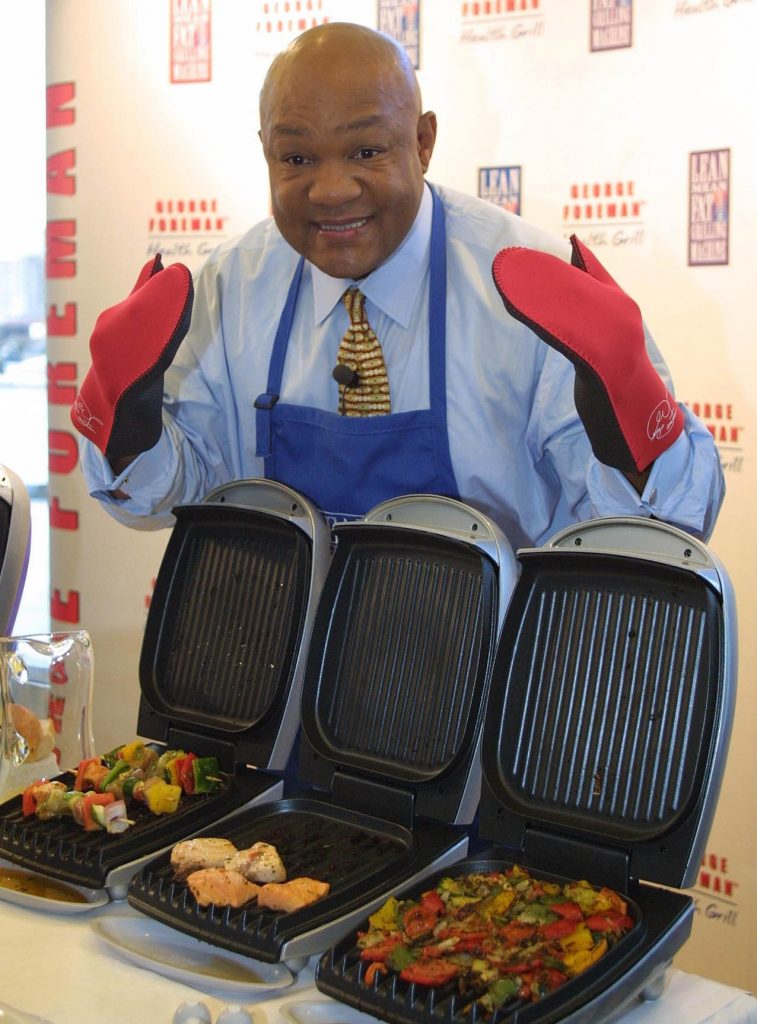
George Foreman found success after his boxing career as a businessman with the George Foreman Lean Mean Fat-Reducing Grilling Machine, which has sold over 120 million units worldwide. | AP
“My greatest strength (as a businessman) is that I know there’s no good deal unless everyone is happy about it,” Foreman told The Japan Times by phone from Texas.
Naturally, he’s derived satisfaction from the popularity of the George Foreman Grill, and not just because of the financial security that’s linked to it.
“The great thing about pitching the George Foreman Grill was that it worked,” he said. “Back in the day you could sell a lot of things, but none that you really say it truly worked. That was the most satisfying thing about the George Foreman Grill to me.”
Foreman personally shipped several of his famous grills to Ali because “I wanted him to have as many as he wanted.”
Joy from giving, learning
Yes, the two-time world champion is an endearing figure in large crowds and small gatherings. And Foreman has used his fame and fortune to help the youth of Houston, his hometown. He opened the George Foreman Youth and Community Center in 1984, several years after he became an ordained minister.
Foreman told a story about meeting one of the center’s former attendees years later that brought him joy. One day in Houston, he said,
“I was driving a convertible and I stopped at a service station to get my car filled. The young man filled my car up, washed the windows and I got ready to leave and he said, ‘Just wait for a moment.’ And he came back, the young man did, and gave me $5. “I said, ‘What is this for?’ “He said, ‘When I wanted to be on your boxing team, I didn’t have $5 to buy handwraps, and you told me I’m going to give it you, but you owe me $5.’ “And there he was a grown man and he said, ‘Can you sign this picture for my daughter?’ And I felt like my youth center was successful. “That meant more to me than if I had trained the heavyweight champion of the world when that man said here’s your $5 back. He never forgot me and that’s when I knew the youth center had been a benefit (to the city).”
Foreman, who has expressed his love of reading numerous times, admitted his quest to study the Bible is an ongoing passion.
“I’ve read the Bible in its entirety several times, and even to this day I continue to read and read again the Bible,” Foreman said.
Memorizing a biblical passage and fully grasping its meaning are two different things, according to Foreman,who made his first title defense in Tokyo against Jose Roman on Sept. 1, 1973, winning via a first-round knockout at Nippon Budokan.
He cited the entire chapter of Psalms 1 as his favorite Bible passage. He then recited a portion of the scripture:
“Blessed is the man who doesn’t surrender to bad counsel . . . who doesn’t take any bad advice.”
He then said: “It didn’t say blessed is the man who has a Rolls-Royce, but the man who doesn’t take bad advice, and I love that because my blessing is that for almost 32 years now I’ve gone with the advice of the Bible. I don’t take bad advice.”
In the spotlight
For Foreman, local, national and international media exposure is a constant, even if he never fought in the 21st century. Individuals born during the past 15 to 20 years may have limited or no knowledge of his fighting career, but in the annals of boxing history he is a seminal figure.
For instance, The Ring magazine, aka the Bible of Boxing, which was founded in 1922, commissioned well-known boxing scribe Thomas Hauser to write “The Greatest Heavyweights of All Time.” The feature was published in the May 2017 issue.
Ali tops the list, followed by Joe Louis, Jack Johnson, Rocky Marciano, Larry Holmes and Jack Dempsey. Foreman was selected at No. 7, with Frazier, Mike Tyson and Sonny Liston rounding out the top 10. Tied at 11th were Lennox Lewis and Evander Holyfield, followed by Gene Tunney, John L. Sullivan and James Jeffries. Brothers Wladimir and Vitali Klitschko were Nos. 16 and 17, with James Corbett, Riddick Bowe and Bob Fitzsimmons wrapping up the top 20.
“A lot of people who are serious about boxing think George Foreman is one of the most underrated fighters ever,” Hauser wrote. “He fought his share of soft opponents. But he’s also one of the toughest men to ever box (watch the Lyle and Moorer fights). He’s one of the hardest hitters ever. And after being heavyweight champion, he came back more than a decade later to do it again.”
Hauser noted that Foreman evolved as a fighter and became a smarter boxer after his comeback.
“Foreman was a much better boxer the second time around,” Hauser wrote. “He was older and slower, but he’d learned to study his opponents and take advantage of what he saw.” What’s more, “Ali fought Joe Frazier three times and Ken Norton three times. He didn’t mess with Foreman again after he beat him,” Hauser pointed out.
Instead of boasting about his notoriety, Foreman projects a humility that resonates with others. He’s a man of the people and enjoys interacting with others. Decades from now, additional chapters in the history books will be written about his place in popular culture. The Rumble in the Jungle, of course, stands out as one of the defining events in his life. That eighth-round knockout defeat to Ali on Oct. 30, 1974,in Kinshasa, Zaire, ended his reign as world heavyweight champion and later spawned an Academy Award-winning documentary, “When We Were Kings,” which was released in 1996.
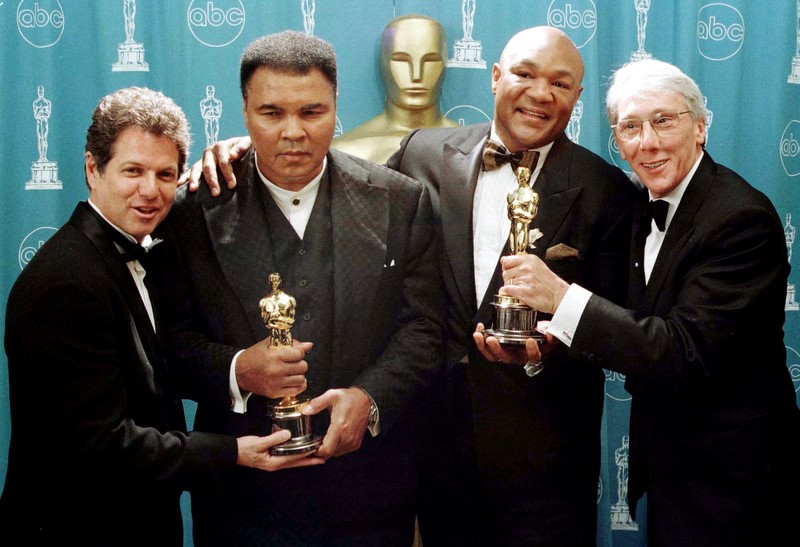
Muhammad Ali and George Foreman pose with producers Leon Gast (left) and David Sonenberg after their film “When We Were Kings” won the Academy Award for Best Documentary Feature in 1997. | KYODO
Active online presence
From his days on TV as a pitch man for KFC, Midas and many others, Foreman’s face is quite recognizable to the generations that grew up after he fought Ali in Kinshasa.
Nowadays, he’s expanded his global outreach via social media. It’s a regular part of his schedule, especially Facebook and Twitter, and a routine that he started around 2010.
“Yeah, I like that. That keeps me busy,” Foreman told this newspaper. “What I wanted to do more than anything the last 25 years is to stay in touch with people, and I get a chance to talk to people from every walk of life. That’s why I do Facebook and Twitter.”
In October, he was asked who was the sporting hero of his youth. “The Great Jim Brown,” Foreman tweeted. “Hero forever for me.”
Asked for a few details of his social media routine, Foreman offered this insight:
“In the evenings, I do Twitter. . . . I’ll pick maybe two hours to do Twitter, an hour and a half to do Twitter, and then early mornings I have my daily quotes. . . . “So I try to get in and get a quote (posted) early in the mornin’ before people get up, so they’ll wake up to something new that I’ve said.”
Tales from the past
Foreman retains many memorable details from his countless conversations with Ali over the years. One, from the 1970s, that illustrated his fondness for the lively characters who make a living in boxing.
“He called me one day after they (boxing officials) had put pressure on him to fight Ken Norton again,” Foreman recounted before adding, “George, they are forcing me to fight Ken Norton again.’ He said, ‘George, I can’t beat Norton. I can’t beat him. I’ve tried everything but I can’t beat him.’ But he said, ‘George, you can beat him.’ “I said, ‘No, I’m a preacher now, giving my life to God. But he said, ‘the people in the Bible, they had fights.’ ‘I said, ‘But I’m not fighting anymore.’ “He said, ‘If you come back, I’ll give you a title shot. I’ll let you use my training camp. Just beat him, please. He doesn’t represent anything, George.’ “He begged me to come back and beat Norton, and I told him, ‘Nope, can’t do it.’ ”
Ali and Norton ultimately wound up fighting three times, with The Greatest winning twice.
In a conversation on “Larry King Now” in 2015, the world-renowned interviewer asked Foreman what was his best attribute as a boxer.
“I never took a step back,” Foreman told King.
With that in mind, Foreman was asked to compare his punching power from past decades to the present time.
“Periodically, I will get on the punching bag,” Foreman said. “And after working two or three days I throw my hardest punch, and the power is still there. It’s still there the way it was when I left in ’97.”
Reprinted by kind permission of the author, first published in the Japan Times (https://goo.gl/fTDzz7)
Article © Ed Odeven

